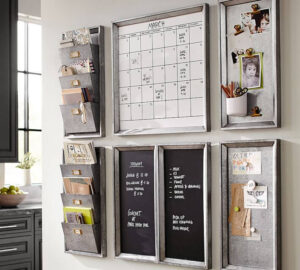| Don’t let their basement “stuff” end up in yours! Here’s how to help parents downsize or just evaluate their belongings. How can one help parents approach what can seem like a daunting task? Helping parents downsize or evaluate their belongings can be a challenging and emotional task, read on for some steps you can take to make the process smoother: Start with a conversation: Before diving into the task of downsizing or evaluating belongings, have a conversation with your parents to understand their perspective and their priorities. Ask them what they consider essential and what they are willing to part with. Listen to their concerns and respect their decisions. Create a plan: Once you have an understanding of your parent’s priorities, create a plan. Break the process into smaller, manageable steps and set achievable goals. Categorize items: Begin by categorizing items into three groups: keep, donate/sell, and discard. Use this system to sort through everything in the house. Encourage your parents to be honest with themselves about what they truly need and what they can let go of. Take it slow: Downsizing can be an overwhelming process, so take it slow. Encourage your parents to focus on one room or area at a time and take breaks when needed. Get help: If you find that the process is too much to handle on your own, consider hiring a professional organizing service. They can provide guidance and support throughout the process. Be empathetic: Remember that downsizing can be an emotional process, and your parents may have attachments to certain items that you don’t understand. Be empathetic and respectful of their feelings. Celebrate progress: Finally, celebrate the progress made along the way. Acknowledge and celebrate the milestones and remember that downsizing is a process that takes time. What to do with family heirlooms and treasures Family heirlooms and treasures are often items that have sentimental value and are passed down from generation to generation. Deciding what to do with them can be a difficult decision, as they hold a lot of emotional weight. Here are some options for dealing with them: Keep them: If the item is important to you and you have the space and means to store and care for it, keeping the family heirloom or treasure can be a good option. Pass them on: Consider passing the item on to another family member who will cherish it and keep it in the family. Talk to your family members to see if anyone is interested in taking ownership of the heirloom or treasure. Sell them: If you do not have space for the item or it does not hold significant sentimental value, consider selling the item. This can help to clear clutter and generate some extra income. Donate them: If the item is not of value to you or your family, consider donating it to a museum, historical society, or other institution that would appreciate the item and be able to care for it properly. Repurpose them: If the item is not useful or practical in its current form, consider repurposing it into something else that can be used or displayed in your home. Ultimately, the decision of what to do with family heirlooms and treasures should be based on what feels right for you and your family. Consider the history and significance of the item, as well as its practical use and sentimental value, before making a decision. What about all the Photos? Photos can hold a lot of sentimental value and memories, making them difficult to part with. Here are some options for dealing with photos: Digitize them: Digitizing photos can help to preserve them for future generations and make them easier to share and view. Consider scanning or photographing old photos and storing them on a computer, external hard drive, or online storage platform. Display them: Select some of your favorite photos and display them in your home. This can help you to enjoy and appreciate them regularly. Create a photo album: Organize your photos into a physical photo album. This can be a great way to preserve them and make them accessible to others. Gift them: Consider gifting some of your photos to family members or friends who would appreciate them. This can be a great way to share memories and keep the photos in the family. Discard duplicates or low-quality photos: Over time, photos can accumulate and take up a lot of space. Consider discarding duplicates, low-quality photos, or photos that do not hold significant sentimental value. Label and organize: Label your photos with dates, names, and locations to help you and others understand the context of the photos. Organize them into categories or themes to make them easier to navigate. Remember that the decision of what to do with photos should be based on what feels right for you and your family. Think about the sentimental value of the photos, their practical use, and the storage space available. For more organizing and decorating ideas, please Click Here |

Community
Safety and Accessibility in Senior Residences
Safety & Accessibility in Senior Residences Safety and accessibility are paramount considerations when designing adult residences to ensure the well-being and comfort of seniors as















